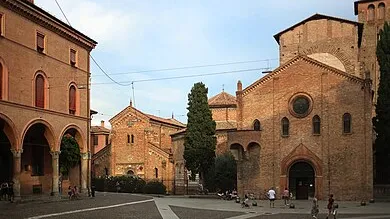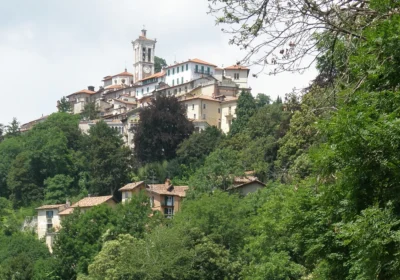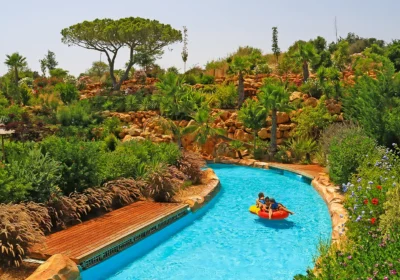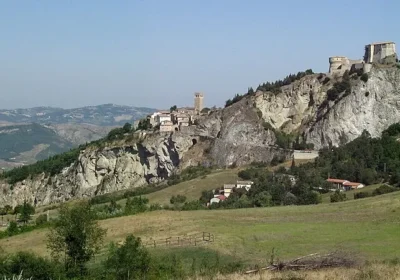The tour includes the “Colours of Bologna” tour and adds a visit to:
The Church of St Stephen and the Basilica of St Domenic.
The “Seven Churches” of Santo Stefano are not a single structure but an entire Christian complex Santo Stefano are not a single structure, but an entire Christian complex. According to legend, St Petronius, Bishop of Bologna in the 5th century, decided to build a complex of buildings on the site of the temple of Isis in the image of the Church of the Holy Sepulchre in Jerusalem. The complex of Santo Stefano includes the church of St John the Baptist of the 8th century, the church of the Holy Sepulchre of the 5th century, the church of the Holy Trinity of the 13th century, which is connected to the other buildings by a portico, the church of Saints Vitalius and Agricola of the 4th century, the Chapel della Benda, dedicated to the strip of cloth that was wrapped around the head of the Virgin Mary as a sign of mourning.
The church of St John the Baptist is in Romanesque style with a single nave and a presbytery above the crypt. The presbytery was rebuilt in the 17th century. Inside it you can see a sculpted crucifix from the fourteenth century, and the walls are decorated with frescoes from the fifteenth century. In the five-nave crypt you can see a variety of columns. According to legend, the height of one of them is exactly equal to the height of Jesus Christ (170 cm). At the base of this column were kept the relics of the saints, whose images were recently discovered under the plaster on the wall next to it. Another small fresco from the 15th century can be seen in the left aisle; it is called “Madonna della Neve”.
The oldest church in Santo Stefano, the Church of the Holy Sepulchre is an octagonal structure with 12 columns supporting the vault from the inside. It has a spring of pure water, symbolically linked to the holy water of the Jordan River.
The Basilica of San Domenico is one of Bologna’s main churches. Here, inside an exquisite tomb by Nicola Pisano and Arnolfo di Cambio, are the relics of St Dominic, founder of the Dominican order. Incidentally, the young Michelangelo also contributed to the creation of the saint’s tomb. It was here that St Dominic died in August 1221 and was buried. His remains were placed in a simple marble sarcophagus in 1233, and later a magnificent tomb was built with depictions of events from the saint’s life. Thus was born the Basilica of San Domenico, which later became a model for many Dominican churches around the world. Today, within the walls of the church you can see the works of the great masters of the past – Giunta and Nicola Pisano, Niccolò dell’Arca, Jacopo da Bologna, Guido Reni, Filippo Lippi and Guercino.
The square in front of the basilica is paved with cobblestones, as it was in the Middle Ages. In the centre stands a brick column with a statue of St Dominic, and behind it is a marble column with the “Madonna with rosary beads”, erected here to mark the end of the plague epidemic in the city. Behind the first column you can also see the tombs of Rolandino de Passeggeri and Egidio Foscarari, decorated with a Byzantine marble arch with a bas-relief from the 9th century.
Here you can see the ancient organ played by the young Wolfgang Amadeus Mozart in the late 18th century. There is also a magnificent chorale, made in the 16th century in the Renaissance style. Its unique wood inlays are considered the “eighth wonder of the world”.

















